



|
Google Chrome thinks enlarging my pictures, some links and sometimes scrolling through the pages is a popup. If you want to navigate my website than please allow "popups". |

| The Monastery of Gouvernetou on the island of Crete - Monastery of unfriendly monks |
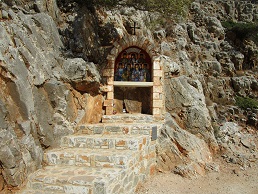 |
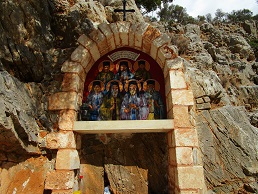 |
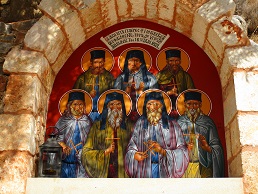 |
 |
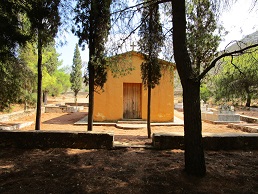 |
 |
 |
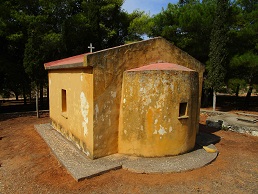 |
|
|
|
|
|
|
|
|
|
|
|
Most guides state that the monastery is opened between 9 am in the morning and 2 pm in the afternoon (and then again after 5 o'clock), but these monks, that apparently don't have much going on with visitors, decided to close it a little earlier, at 12 o'clock. The doors were not closed though, so we thought we would just take a look. Immediately a hysterical monk came running to us, shouting "closed! closed". Why don't you keep your doors locked when it is closed, that's what I thought. Well, next to the monastery in the back there is a small hill so I decided to climb up there to have a better look and to take some more pictures of the monastery. At the first click of the camera another fat monk started screaming hysterically "no pictures!", But I thought 'you can go and take a hike, I am not going to listen to you" and so I climbed a little higher for the next picture. If he would give me a hard time I would give him trouble. You don't want to get into an argument with me ;). What an idiots... |
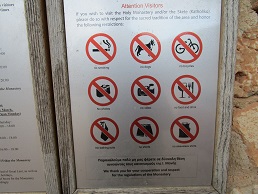 |
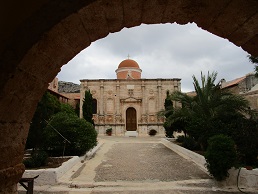 |
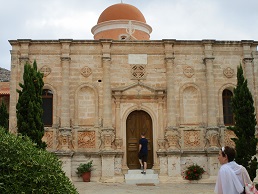 |
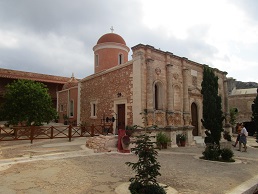 |
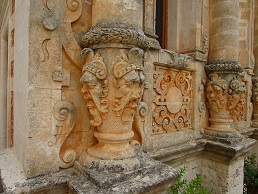 |
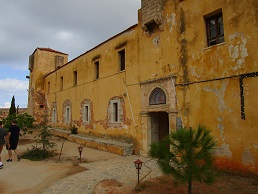 |
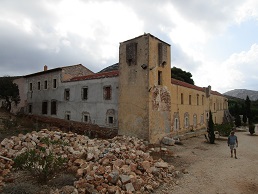 |
 |
|
The Gouvernetou Monastery was built in the 16th century (1537) and on the outside it looks like a Venetian fortress because of the high, thick walls and towers around the monastery that were built to defend it against attackers. Of the original four towers only two survived. The monastery was badly damaged several times. During the Turkish occupation the records of the monastery were burned and many monks lost their life, and during the German occupation the Germans lived in the monastery. On the square behind the walls is a beautiful little monastery-church (first half 17th century - the interior is pretty but also a bit disappointing because the wall paintings are quite new) which is dedicated to the Virgin Mary, two churches (one of which is dedicated to the founder of the Agios Ioannis monastery, St. John the Hermit, and one dedicated to the martyrs of Agii Deka (= the 10 saints)) and there is a garden with various fruit trees. In front of the monastery-church there are Venetian style carved pillars with images of monsters. In the monastery there is a small museum with religious objects. |
| The Minoan "Cave of the Bear" and the Katholiko Monastery |
|
|
|
|
|
|
|
|
|
|
|
At the back of the monastery at the monument is a path to a cave in the hills (the Cave of the Bear) and the monastery of Agios Ioannis (the one of St. John the Hermit), better known as the Monastery Katholiko. The cave is dedicated to the Virgin Mary, and here objects were found that indicated that the cave was once dedicated to the goddess Artemis (the goddess of hunting). The Cave of the Bear owes its name to a stalagmite (the big white) in which with much imagination you could recognize a bear. In this shape of the bear the goddess Artemis would appear. At the entrance of the cave is a small Chapel dedicated to Maria with an even smaller cave church next to it. In front of the cave are the remains of another old monastery and down below in the valley you can see another old building. |
 |
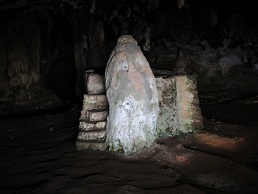 |
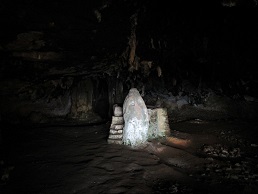 |
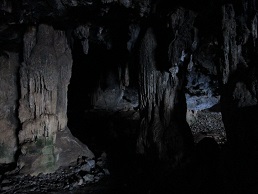 |
 |
 |
 |
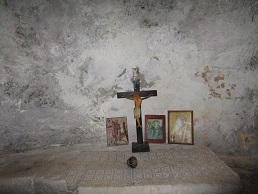 |
|
The Minoan cave is reached after about 15 minutes walking, the Katholiko monastery is another 30 minutes walk away. This monastery dates from the sixth or seventh century and is probably the oldest monastery in Crete. It is partly built into the rocks / cave. There is a bridge in front of the monastery which is 50 meters long and 15 meters wide. It runs over a 30 meter deep gorge (the Avlaki Gorge). The monastery is partly a ruin but it is beautiful. Unfortunately we were too lazy to walk there ourselves, but we had no idea (but in 2017 we did make this walk). Photos of the monastery on the internet are very interesting so if you're there it might be worth to walk the extra 30 minutes and have a look. With thanks to my friend Frankie Miles who send me a picture of the Katholiko Monastery (below). |
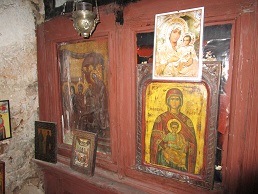 |
 |
 |
 |
|
|
|
|
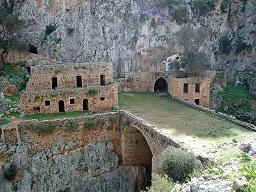 |
© Hans Huisman, Frankie Miles, https://www.angelfire.com/super2/greece/ 2019







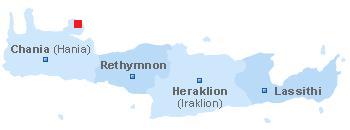 The Gouvernetou Monastery is located on the northeast side of the Akrotiri peninsula, near the town of Chania (19 km). It can be reached if you drive from Souda and follow the signs to the airport. Automatically the signs to the Agia Triada monastery and the Monastery of Gouvernetou will appear on the roadside. Miles before you reach the monastery you can already see the signs that taking photos inside the monastery is not allowed and even outside the monastery it is not allowed. Ridiculous of course. It is not a military site and the paint doesn't fall from the walls when you take a picture of the building. I can understand that you cannot make pictures with a flash light of wall paintings or sacred objects or anything like that, but how crazy can you make it? At the gates of the monastery there is another "no photography" sign. You have to walk over a path through the garden / forest to reach the monastery. Don't photograph a tree or anything, it is forbidden. Here you'll pass a nice church (on the right hand side) where I took out my camera for the first time. Also at the front of the monastery I made some pictures and believe me the building didn't fall apart!
When we were visiting the monastery at another time because we wanted to walk to another nearby monastery, Katholiko, the doors were open and all the tourists were making pictures.
The Gouvernetou Monastery is located on the northeast side of the Akrotiri peninsula, near the town of Chania (19 km). It can be reached if you drive from Souda and follow the signs to the airport. Automatically the signs to the Agia Triada monastery and the Monastery of Gouvernetou will appear on the roadside. Miles before you reach the monastery you can already see the signs that taking photos inside the monastery is not allowed and even outside the monastery it is not allowed. Ridiculous of course. It is not a military site and the paint doesn't fall from the walls when you take a picture of the building. I can understand that you cannot make pictures with a flash light of wall paintings or sacred objects or anything like that, but how crazy can you make it? At the gates of the monastery there is another "no photography" sign. You have to walk over a path through the garden / forest to reach the monastery. Don't photograph a tree or anything, it is forbidden. Here you'll pass a nice church (on the right hand side) where I took out my camera for the first time. Also at the front of the monastery I made some pictures and believe me the building didn't fall apart!
When we were visiting the monastery at another time because we wanted to walk to another nearby monastery, Katholiko, the doors were open and all the tourists were making pictures.